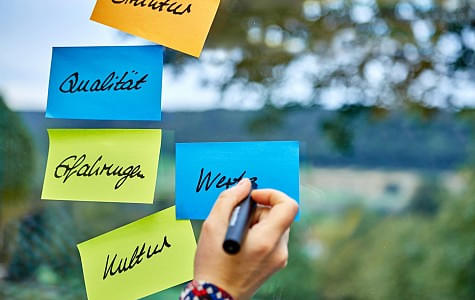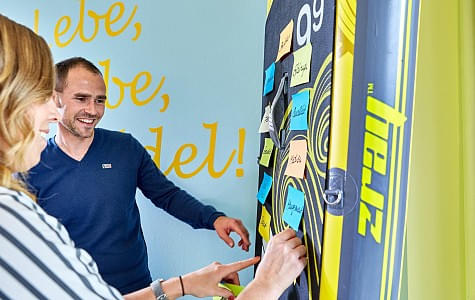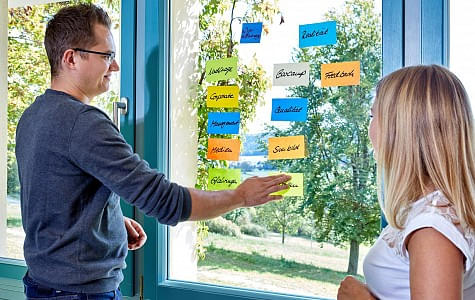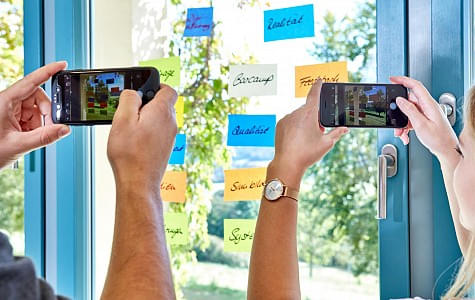DESIGN THINKING
Design thinking is a creative and collaborative problem-solving method from a user’s perspective. The aim is to find solutions which are convincing from the point of view of the user.
Procedure:
Design thinking consists of 5 phases: Understanding and observing (empathise), defining problems (define), finding ideas (ideate), developing prototypes (prototype), testing (test). In phase 1, the aim is to mark out the problem, namely from the customer’s (or target group’s) point of view. This is best achieved through interviews, barcamp or social media surveys. In phase 2, the realisations from phase 1 are analysed and interpreted and the problem is defined. In phase 3, various creative ideas are developed. This is done in teams, e.g. in a brainstorming meeting.The ideas are collected on post-it notes. In phase 4, the best ideas are selected and concepts or prototypes are developed which are then tested in phase 5 with the customer (target group).
Phases 1-3 are ideally carried out in a hotel during a 2-3 day event, e.g. day 1 barcamp, fishbowl or interview with customers, days 2 and 3 for phases 2 and 3.
Ideal group size: 20-30 people
Duration: 1-2 days depending on group size and topics
Materials: Moderator’s toolbox, several flipcharts, pinboards, pens
Advantages:
- Refreshing, restructuring or further development of products, services, trade goods
- Direct exchange with customers, customer is the focus
- Creative problem solving, teamwork, visualisation of solution approaches






